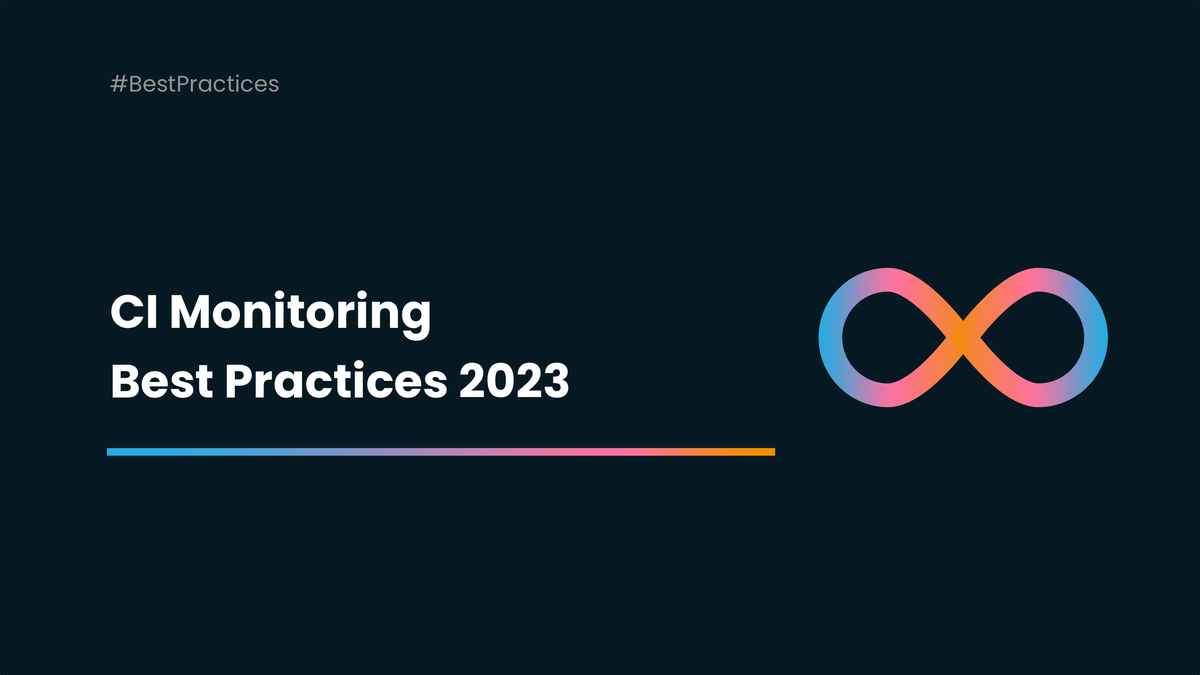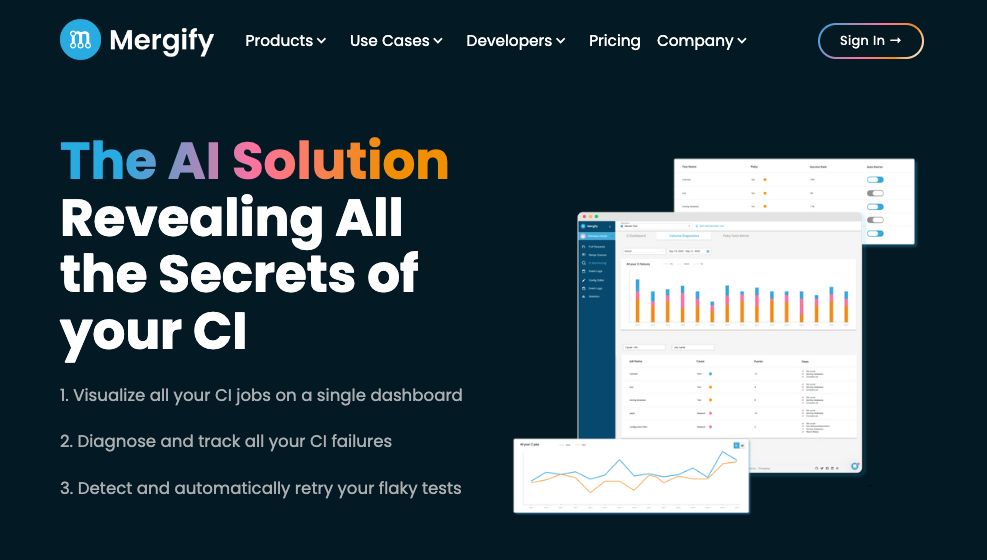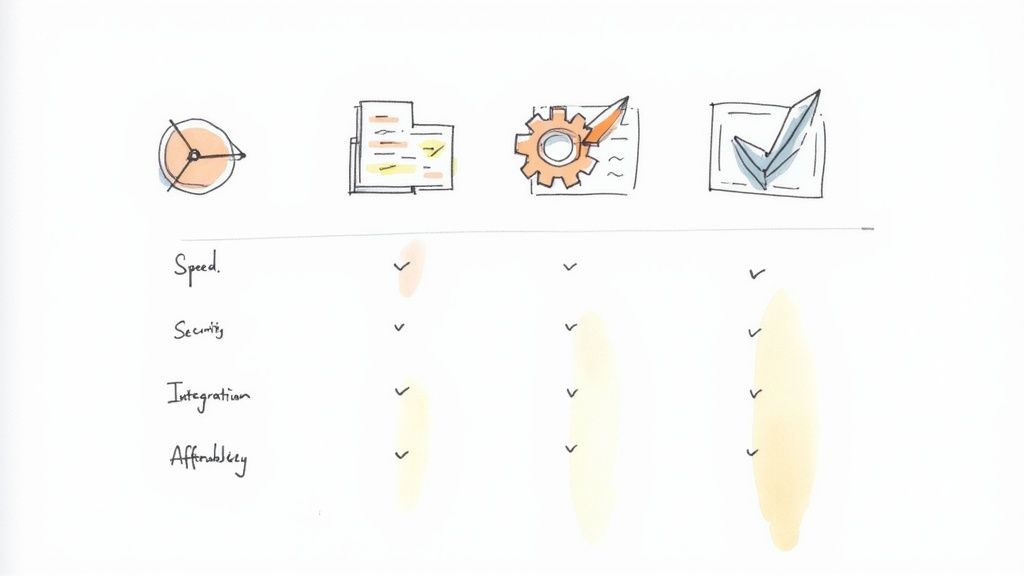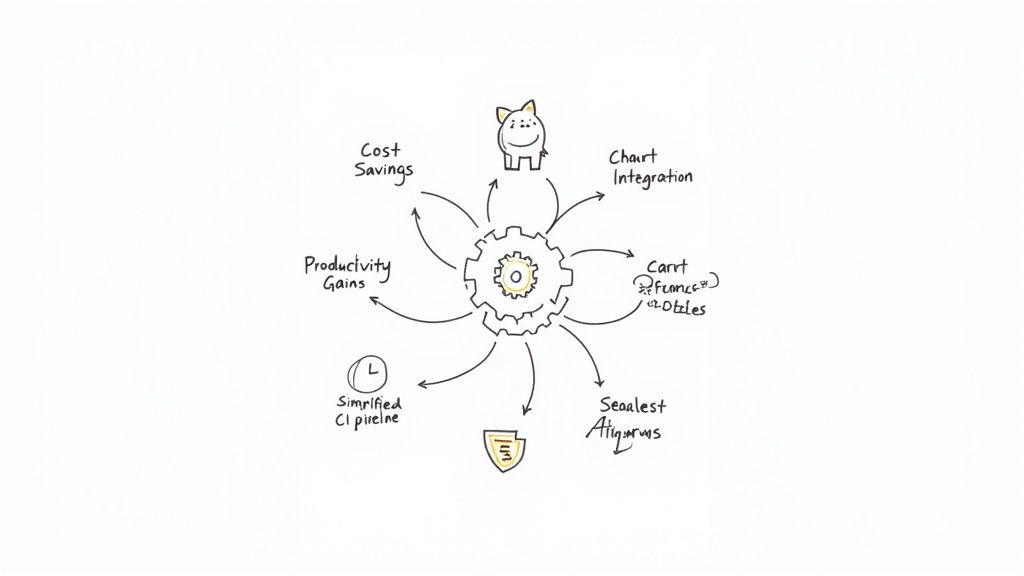CI Monitoring Best Practices 2023
CI monitoring in 2023 is pivotal for proactively optimizing the software delivery pipeline, ensuring rapid, reliable, and high-quality releases.

In the ever-evolving landscape of software development, Continuous Integration (CI) has established itself as a critical practice for fostering efficiency and reliability.
CI is a development practice that requires developers to integrate code into a shared repository several times a day. Each integration is then verified by an automated build and automated tests. While integrating various pieces of code, CI aims to detect and fix conflicts early, which is pivotal for improving code quality and reducing the time it takes to validate and release new software updates.
At its core, CI is about keeping the software's mainline (or trunk) in a state of readiness to deploy at any time, which aligns with Agile practices and supports the frequent delivery of small increments of functionality. CI serves as the foundation for the larger Continuous Delivery (CD) practice, where every change that passes all stages of your production pipeline is released to your customers. CI is the first step that ensures each change to the software is functional and stable.
Monitoring in CI is analogous to a robust immune system in a living organism; it is vital for maintaining the health and performance of the software development life cycle.
The Importance of Monitoring in CI
Just as CI is about the health of the code, CI monitoring is about the health of the process itself. It's a way to ensure that the CI system is functioning correctly and that the software being developed is of high quality.
Continuous Integration generates a wealth of data that, if monitored correctly, can offer insights into the stability of the codebase, the efficacy of tests, the duration of the build process, and more.
Monitoring these metrics can provide early warnings for potential issues such as flaky tests, long integration times, or build failures. It allows teams to address problems before they grow more complex or affect more parts of the software.
By tracking this information, teams can also improve their processes, enhance performance, and better allocate resources.
Furthermore, in a world where CI systems are increasingly integrated with cloud services and other online platforms, monitoring can help ensure that integration points are functioning correctly and that external changes do not disrupt the CI pipeline.
CI Monitoring Best Practices 2023
Automate Everything
The CI pipeline should be as automated as possible to reduce human error and ensure consistent results. This includes the monitoring processes. Use tools that automatically track and report on key metrics. We will talk about it in the next part.
Define Key Performance Indicators (KPIs)
Determine what metrics are most important for your team. Common CI KPIs include build success rates, build duration, test pass rates, and frequency of integration. These should be regularly reviewed and updated as your team's needs evolve.
Cycle Time
Cycle Time measures the duration from the initiation of work on a piece of software to the point where it's ready for delivery.
Time to Value (TTV)
Time to Value focuses on the span from when code is completed to when it's functioning in a live environment.
Uptime, Error Rate, Infrastructure Costs
Uptime quantifies the reliability of the system's operations, while the error rate and infrastructure costs provide insights into the stability and economic efficiency of the CI/CD environment.
Implement Real-Time Alerts
Set up real-time alerts for critical issues in the CI pipeline, such as failed builds or tests. This allows teams to respond immediately, minimizing downtime and disruption.
Integrate Log Monitoring
Include comprehensive logging within the CI pipeline and utilize log monitoring tools to analyze and visualize these logs. This can help identify patterns that precede failures or performance bottlenecks.
Leverage Dashboard Visualizations
Use dashboards to display real-time data on the status of the CI pipeline. This should provide a quick overview of the system’s health and make it easier to spot issues at a glance.
Monitor Across Different Environments
Ensure that you monitor the CI pipeline across all environments where code is integrated and tests are run. This includes development, testing, staging, and production environments.
Regularly Review and Optimize
Continuously review the monitoring process itself for improvements. Monitor how monitoring impacts the team's workflow and make adjustments to ensure it adds value without becoming a burden.
Educate Your Team
Ensure everyone understands the importance of monitoring and how to respond to the data and alerts that come from the monitoring system.
Prepare for Failures
Use monitoring data to plan for and simulate failures (Chaos Engineering) to ensure your system is resilient and teams are prepared to handle unexpected issues.
CI Monitoring product Mergify
Mergify CI Monitoring is set to redefine CI processes. Designed with AI at its core, it is adaptable to any framework, ensuring a wide range of applications.

CI monitoring solutions give you access to data and insights, but you still need to interpret them and do manual actions. We decided to change that with CI Monitoring, a new product that, additionally to giving you number analysis, will act to save you time and money.
Let's go deeper into some CI Monitoring features:
CI Dashboard View
The CI Dashboard feature lets you view the status of your CI as a whole. Thanks to a range of filters, you can focus on the CI jobs that interest you at any given moment.
- Visualize all your CI jobs on a single Dashboard.
- Navigate through the custom date range and state.
- Check your CI's overall condition at a glance.
Logs Analysis
Leveraging the power of AI, CI Monitoring delves deep into logs, providing developers with real-time feedback and actionable insights. Once analysis is over, it's time for CI Monitoring to classify your tests.
Classify and Understand CI Failures
CI failures are annoying, especially when you don't know where they come from or why they happened. The Failure Diagnosis feature allows you to identify the root causes of failure.
- Identify and record all failures.
- Understand root causes: infra, network or tests.
- Find out how to avoid these failures faster.
Automatic Retries
When diagnosing failures, our AI is able to detect the flaky tests present in your suite. While waiting to repair them definitively, the Flaky Retrier feature lets you choose which tests CI Monitoring should automatically re-run.
- Our AI detects and spots flaky tests.
- Highlighting the pass/fail rate for each test.
- Decide which tests to automatically retry.
- Flakyguard feature
Universal Integration
CI Monitoring is agnostic. In other words, it works and interfaces perfectly with all CI tools and test frameworks. You won't need to configure it for every framework in your test suite.
- Enable CI Monitoring.
- Set it up once and for all.
- Let AI do the work.
More than just an error tracker, join the waiting list to be among the first to use CI Monitoring.
Conclusion
As your CI is the pillar of the excellent wealth of your code, you need to take care of it. In 2023, it's an essential strategy for keeping pace with the demands of modern software development.
Continuous Integration stands at the heart of a high-performing development ecosystem. It not only streamlines code integration and validation but also fortifies the agility and resilience of the development lifecycle.
By focusing on metrics, and monitoring, we empower teams to deliver superior-quality software at an accelerated pace, positioning organizations at the vanguard of technological advancement and innovation.





